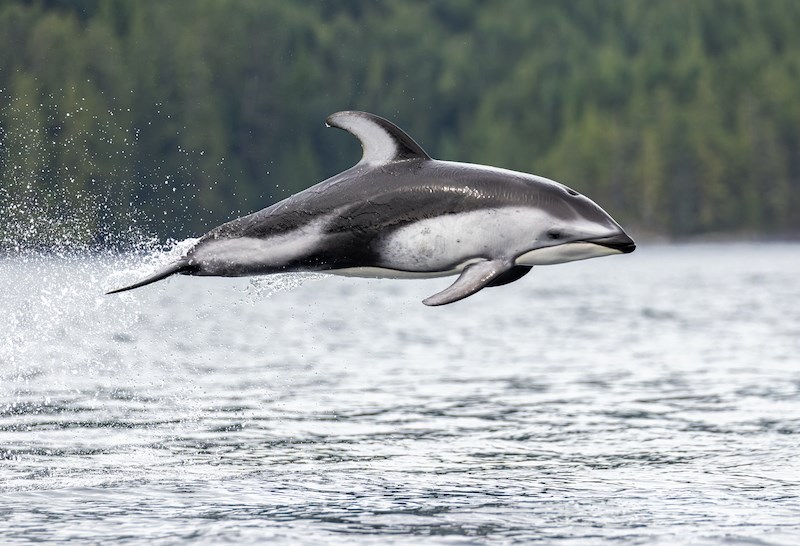While you might associate them with the tropics, several species of an impressive marine family visit B.C. waters.
The mammal family Delphinidae includes well-known oceanic dolphins such as the bottlenose and common dolphins, as well as some lesser-known species like the rare, petite Hector's dolphins. River dolphins are included in the families Platanistidae and Iniidae, according to the .
But one frequently-spotted B.C. dolphin might shock you — and not because of the way it looks.
Orca whales, commonly referred to as "killer whales," should actually be referred to as "killer dolphins," jokes Professor Andrew Trites, director of the University of British Columbia's Marine Mammal Research Unit.
Trites, who came to Â鶹´«Ã½Ó³»in the 80s, tells Â鶹´«Ã½Ó³» that the marine giants often get mistaken for whales due to the popular moniker and because of their size.
He adds that only a couple of dolphin species call B.C. home year-round: the Pacific white-sided dolphin and the orca.
"The ocean is just covered with dolphins."
Pacific white-sided dolphins are known for their impressive speed and acrobatic displays, which include soaring leaps above the water and somersaults.
The white-sided dolphins are typically found in small numbers, such as ten to 15 individuals, but that number can go up to 50 to 100 and occasionally 300. On a true "superpod day," however, that number can shoot up to 1000 of the playful creatures. "We've had it happen in the Salish Sea."
When an event like this happens, Trites says "the ocean is just covered with dolphins."
And while other species of dolphins visit B.C. waters, he notes that some marine species are commonly mistaken for them.
"The harbour porpoise and Dall's porpoise look somewhat similar and the biggest difference is they have a dorsal ridge and they have a dorsal fin," he explains.
Passengers on BC Ferries often spot Pacific white-sided dolphins and doll's porpoises bow-riding along the side of the vessels.
Transient orca whales hunt Pacific white-sided dolphins, although their preference is for harbour seals, which are fatty and easier to catch. Resident killer whales, on the other hand, only eat fish.
Dolphins travelling to B.C. waters
Other species of dolphins are most likely to visit B.C. waters during the summer months when the water is warmer. "Sometimes they're encountered up near Haida Gwaii because they are often feeding along the continental shelf breaks."
Trites also notes that there has only been a resident population of Pacific white-sided dolphins in the Salish Sea since 2005.
Risso's dolphins look a little bit like a beluga but more "dolphin-like," he comments. "The bodies of old males tend to be quite white and covered in battle scars."
While he's spotted Risso's dolphins locally a couple of times, Trites notes that people have seen other species. "There have been a couple of reports of two species of common dolphin. Common dolphins are very rare to see here but I know of other researchers that have."
Common dolphins are the most frequently seen dolphins south of the border in California but they are relatively rare in B.C. As the oceans continue to warm, however, people may begin to see them more often.
Some species of dolphin are so rare in B.C. that they may have only been spotted once. For example, Trites notes that the "false killer whale," scientific name Pseudorca crassidens, has only been seen one time. Researchers believe the solitary cetacean followed a freighter into the Â鶹´«Ã½Ó³»area. "It used to hang out in Tsawwassen and follow the boats around."
Species that are more common include Risso's dolphins, the long-beaked common dolphin, the short-beaked common dolphin, the short-finned pilot whale, and the northern right whale dolphin.
Trites adds that other dolphin species may be less easy to spot because they are off-shore in deeper waters.



